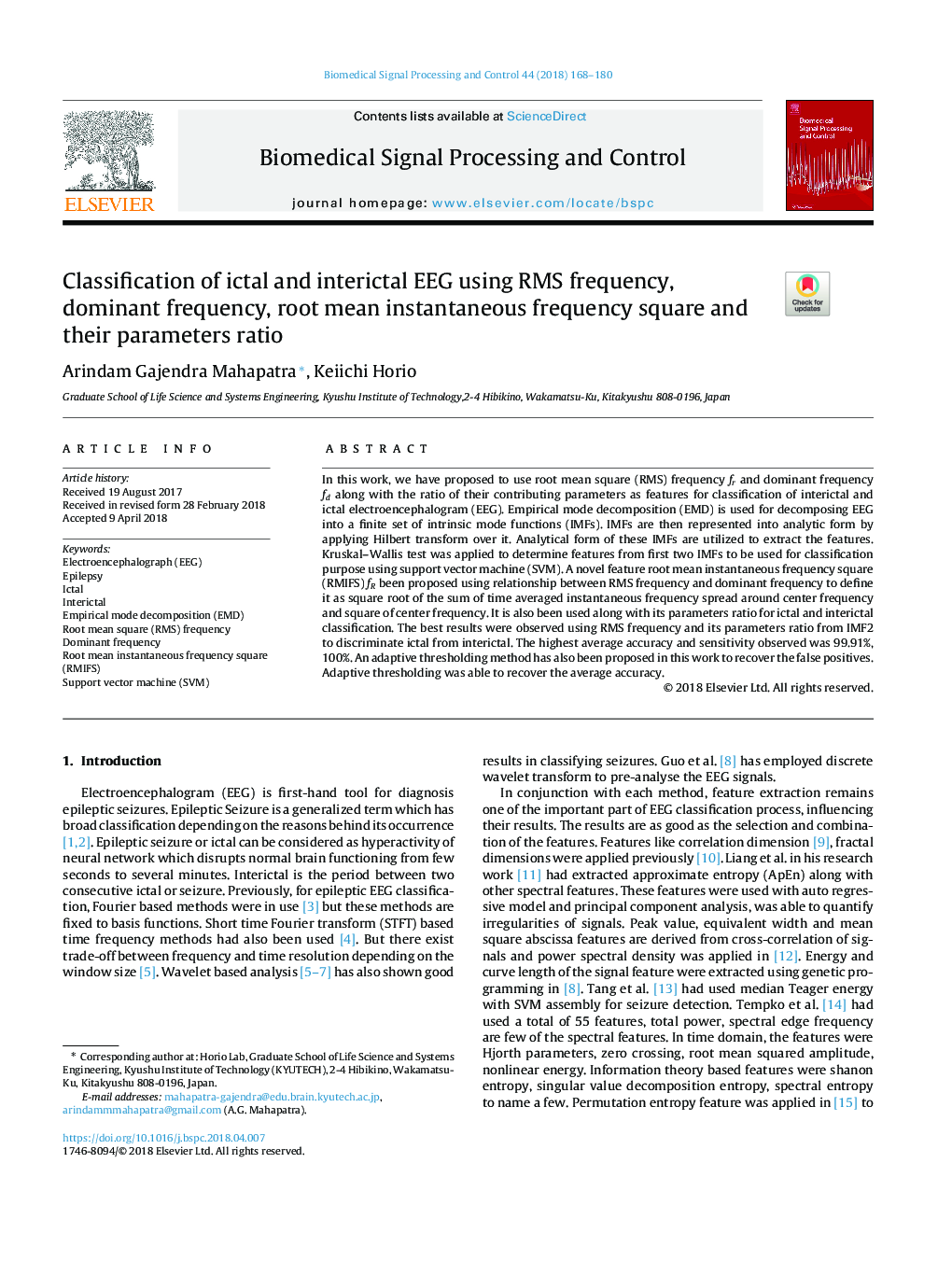| Article ID | Journal | Published Year | Pages | File Type |
|---|---|---|---|---|
| 6950785 | Biomedical Signal Processing and Control | 2018 | 13 Pages |
Abstract
In this work, we have proposed to use root mean square (RMS) frequency fr and dominant frequency fd along with the ratio of their contributing parameters as features for classification of interictal and ictal electroencephalogram (EEG). Empirical mode decomposition (EMD) is used for decomposing EEG into a finite set of intrinsic mode functions (IMFs). IMFs are then represented into analytic form by applying Hilbert transform over it. Analytical form of these IMFs are utilized to extract the features. Kruskal-Wallis test was applied to determine features from first two IMFs to be used for classification purpose using support vector machine (SVM). A novel feature root mean instantaneous frequency square (RMIFS) fR been proposed using relationship between RMS frequency and dominant frequency to define it as square root of the sum of time averaged instantaneous frequency spread around center frequency and square of center frequency. It is also been used along with its parameters ratio for ictal and interictal classification. The best results were observed using RMS frequency and its parameters ratio from IMF2 to discriminate ictal from interictal. The highest average accuracy and sensitivity observed was 99.91%, 100%. An adaptive thresholding method has also been proposed in this work to recover the false positives. Adaptive thresholding was able to recover the average accuracy.
Keywords
Related Topics
Physical Sciences and Engineering
Computer Science
Signal Processing
Authors
Arindam Gajendra Mahapatra, Keiichi Horio,
